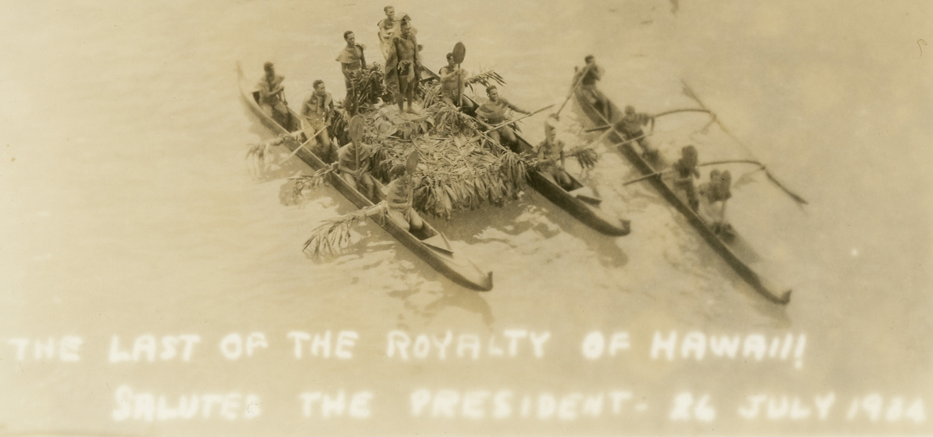The FDR Library has this photo, captioned, “The Last of the Royalty of Hawaii! Salutes the President—26 July 1934,” on its website.
I’m pretty sure—especially from the description in the US Navy Historical Command’s history of the USS Houston—that the caption, written on the original photo, is intentionally whimsical, and the person wearing the feathered cape and headdress of Hawaiian aliʻi (familiar to viewers of Chief of War) is actually Duke Kahanamoku, Olympic swimming champion, longboard surfer, and then-serving sheriff of Honolulu. Duke Kahanamoku would also greet Ernest Gruening, as administrator of the Division of Territories and Island Possessions, in 1937—though apparently without the special garb.
Roosevelt’s 1934 trip was a combined Good Neighbor Policy / Territorial relations tour. He would first visit Haiti, from which he had ordered the accelerated end of the US occupation (reversing not only US policy but his own earlier views, when he was Assistant Secretary of the Navy under Wilson); he would also go to Colombia.
Maybe more importantly, he visited Puerto Rico and the Virgin Islands, and afterward Hawaiʻi (the first sitting president to do so). He had just created the Division of Territories and Island Possessions to administer the New Deal in Puerto Rico, the Virgin Islands, Hawaiʻi, and Alaska—the territories whose people were US citizens—and on this trip he would explain that US citizens in the territories were as much a part of the “American family” as anyone else.1
Footnotes
Franklin D. Roosevelt, “Radio Address of the President, San Juan, Puerto Rico,” July 7, 1934, “July 7–21, 1934,” Master Speech File, FDRL; “The President at St. Croix, V.I. (Transcript),” July 8, 1934, fldr “Speech at San Juan, St. Croix, Panama—Caribbean Tour,” Master Speech File, FDRL; Franklin D. Roosevelt, “Radio Address at Honolulu, T.H.” July 28, 1934.↩︎
